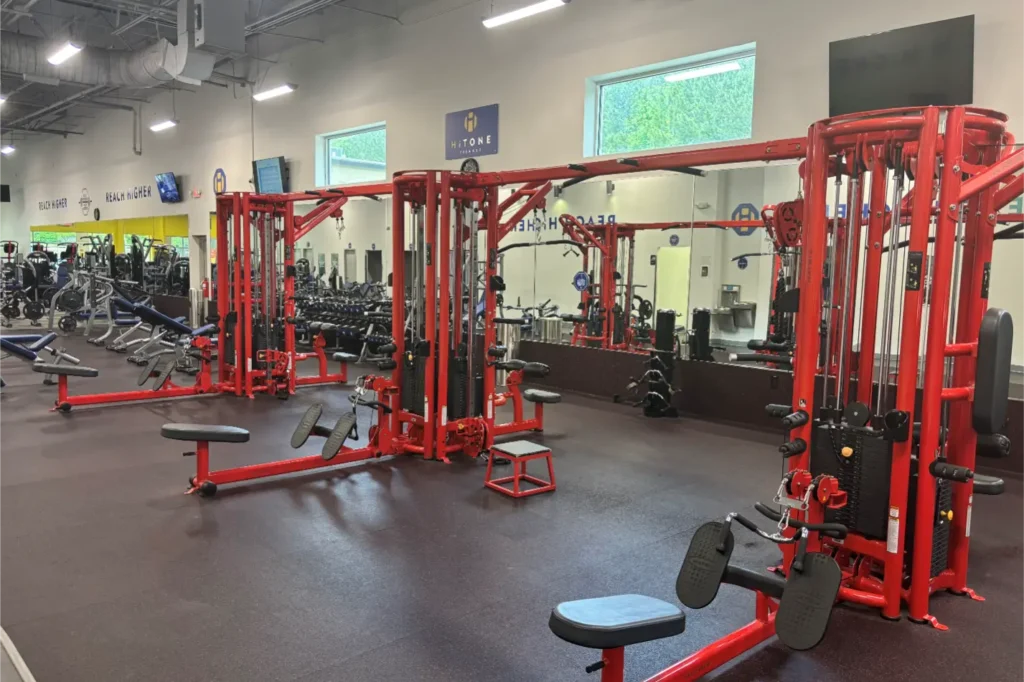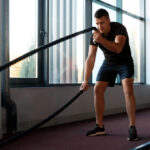Calisthenics, the art of using one’s body weight as resistance to build muscle and increase flexibility, is a time-honored approach to fitness that doesn’t require expensive equipment or a gym membership.
Among the many areas of the body that calisthenics can effectively target, the shoulders are particularly responsive to bodyweight exercises. Strengthening the shoulders is crucial not only for athletic performance but also for daily activities that involve lifting, pushing, and pulling.
In this article, we’ll dive into various calisthenic exercises specifically tailored for building shoulder strength, ensuring that they are accessible for fitness enthusiasts at all levels, from beginners to advanced practitioners.
Benefits of calisthenics
Specifically focusing on the shoulders, calisthenics helps in building a strong, balanced musculature around the shoulder girdle. This is crucial for preventing injuries that could arise from everyday activities.
Exercises like push-ups and planks help in strengthening the deltoids, rotator cuffs, and scapular muscles, which are key to maintaining shoulder integrity and function.
Basic shoulder exercises
- Pike push-ups: This variation of the classic push-up specifically targets the shoulders and is perfect for beginners looking to build strength. Start in a piked position with your hips high in the air, creating a V shape with your body. Place your hands shoulder-width apart on the ground. Bend your elbows to lower your head towards the ground, then push back up to the starting position. Keep your core tight throughout the exercise to maintain form.
- Wall walks: Begin in a standard push-up position with your feet against a wall. Gradually walk your feet up the wall while moving your hands closer to the wall, essentially walking into a handstand position. Hold briefly, then carefully walk back down. This exercise not only strengthens the shoulders but also improves balance and core stability.
- Bear crawls: Start on all fours with your knees lifted slightly off the ground. Move forward by stepping with your right hand and left foot, then your left hand and right foot, continuing to alternate. This full-body exercise primarily enhances shoulder stability and mobility, and it can be performed in a small space, making it ideal for home workouts.
Intermediate shoulder exercises
As you progress in your calisthenics journey, intermediate exercises help bridge the gap between basic moves and more advanced techniques. These exercises challenge your strength and endurance further, paving the way for more complex movements.
- Dip shrugs: Ideal for targeting the lower part of the trapezius muscles, dip shrugs are performed on parallel bars. Start by hoisting yourself up with your arms straight in the dip starting position. Lower your body slightly by bending your elbows, then elevate your body by shrugging your shoulders downwards, lifting through your trapezius muscles. This move not only strengthens the shoulders but also engages the upper back.
- Handstand push-ups: Begin by mastering a wall-supported handstand. Once stable, slowly bend your elbows to lower your head towards the ground, then push back up. This advanced move intensely targets the deltoids and also works the triceps and upper chest. Gradual progression and strength buildup are crucial for this exercise.
- Archer push-ups: Start in a wide push-up position. As you lower yourself, shift your weight to one arm while keeping the other arm straight out to the side, mimicking the drawing of a bow. Alternate sides with each rep. This exercise enhances shoulder stability and increases unilateral strength, helping correct imbalances.
Advanced techniques
For those who have developed significant strength and control through intermediate exercises, advanced calisthenics techniques can offer a new level of challenge and reward.
- Planche training: Begin with easier progressions such as the planche lean or frog stand before attempting the full planche. This involves lifting your entire body parallel to the ground, supported only by your hands. It requires immense shoulder strength, core control, and balance.
- 90-degree push-ups: This spectacular exercise combines a push-up with a handstand. You start in a handstand, lower into a push-up, then push back into the handstand. Mastery of this technique showcases peak shoulder strength and control, and should only be attempted after thorough preparation with less intense exercises.
Safety tips and techniques
Maintaining proper form and adhering to safety protocols is crucial in preventing injuries, especially as exercises become more challenging.
- Proper form: Always prioritize form over quantity. Incorrect form not only reduces the efficacy of the exercise but also increases the risk of injury. For shoulder exercises, ensure that your joints are aligned and movements are smooth and controlled.
- Injury prevention: Shoulders are particularly prone to injury due to their wide range of motion. Warm up adequately before workouts, including dynamic stretches and light, preparatory exercises. Incorporate mobility work and strength training for supporting muscles to maintain balance and joint health. To avoid injuries, consult a professional who can ensure you have proper form. If you’re located in Fayetteville, make sure to visit HiTone Fitness in Fayetteville.
Final thoughts
By incorporating these exercises into your routine, not only do you improve your physical capabilities, but you also gain the mental and emotional benefits of a disciplined fitness regimen. Remember, the key to success in calisthenics is consistency, proper form, and listening to your body to prevent injuries.





